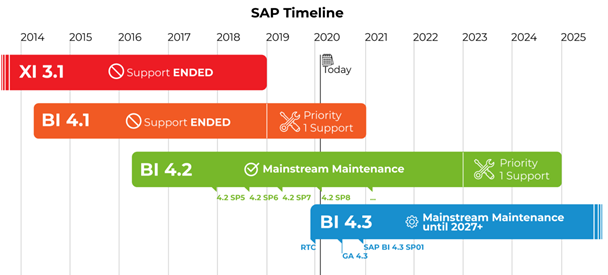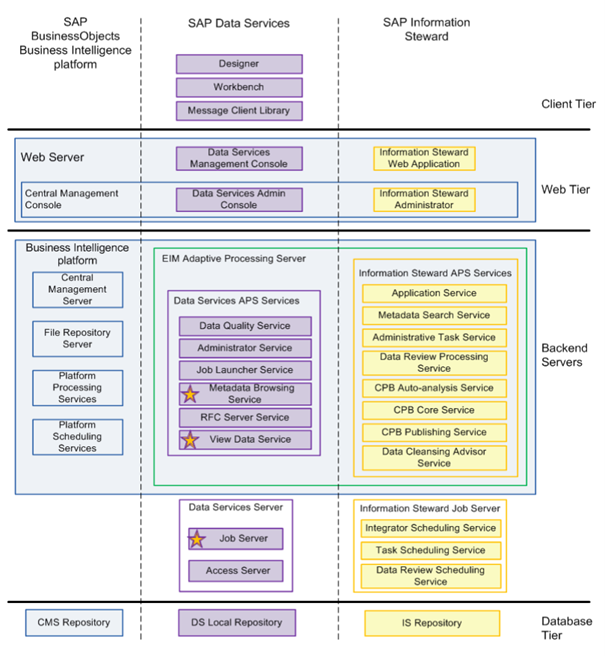SAP Business Objects, often referred to within the SAP ecosystem as BOBJ, is one of the most evolved and reliable analytics and reporting engines running today. With over 60,000 BOBJ installations, the solution can be found in companies of all sizes in every industry around the world. Founded in 1990 and acquired by SAP in 2007, Business Objects is still primarily located in on-premise servers and managed by varying forms of support structures and end-user teams. Its reliability and stability remain unquestioned.
Why tinker with something that is working well? There are several considerations for moving BOBJ to a cloud-based environment. While many cloud providers can be a good fit for BOBJ, Protiviti recommends migration to SAP’s Private Cloud Environment (PCE) as the best option for most organizations. BOBJ PCE bundles replaces a client’s annual maintenance with a subscription model that includes the software license, infrastructure on the client’s hyperscaler of choice, and software support and infrastructure management from SAP.
This blog covers considerations that directly impact ROI for our clients and highlights new ways of working and the art of the possible in any company’s future SAP BOBJ cloud-based landscape.
Use this opportunity to upgrade the BOBJ environment
The migration of BOBJ to the cloud delivers several benefits, beginning with the logical notion of upgrading the BOBJ environment. The list of benefits from an upgrade is long, but we believe these are the most important:
- Ensure ongoing support
- Modern user interface
- Improve performance
Ensure ongoing support: Many SAP BusinessObjects customers are on an older version of BOBJ than the latest BI 4.3 release. For customers still running BI 4.1 or BI 4.2, the migration to the cloud is the perfect opportunity to make the upgrade within the context of the migration project. And while, UNVs are still supported, this is a great time to consider upgrading to the more modern UNX format for added flexibility and options. Note that the UNV format will not be supported by SAP after 2027.
BI 4.1 support has ended except for Priority 1, and BI 4.2 Mainstream Maintenance ends at the end of 2022, so any migration during 2022 creates a logical reason to move to BI 4.3 and keep Mainstream Maintenance available to (at least) 2025. SAP recently issued a statement of direction that only BOBJ PCE will be supported beyond 2027.

Source: SAP BusinessObjects BI 4.3 (SAP BI 4.3) Released! Blog by Patrick Perrier June 13, 2020
Modern interface: BI 4.3 eliminates reliance on Java by consolidating the various designer interfaces into a single HTML-5 interface. In addition, a Fiori-based interface (also known as Fiorified BI Launchpad) provides a modern user experience aligned with SAP’s cloud solutions like SAP Analytics Cloud and SAP Data Warehouse Cloud.
Modern Platform: In addition to the interface changes, BI 4.3 has gone through structural changes. All legacy 32-bit components have been rebuilt as 64-bit, including Crystal Reports 2020, and client tools. This change will not only improve performance but also simplify administration. In addition, BI 4.3 is the most “cloud ready” BOBJ version providing deeper integration to SAP Analytics cloud and ease of administration between the product suites as well as providing a seamless experience for users between the two product suites.
BOBJ has been running in many client environments consistently for 10, 20 years or even longer. The latest version, SAP BI 4.3, was released in the summer of 2020 but still maintains a low upgrade rate. In other words, customers like the earlier versions of BOBJ and don’t feel the need to move to 4.3. In fact, SAP BI 4.1, ended all support at the end of 2020, and SAP BI 4.2 Mainstream Maintenance lasts until the end of 2022. In short, no one is in a hurry to upgrade.
A cloud migration changes that equation. A move to the cloud provides a fresh look at the entire BOBJ BI architecture, including Data Services and Information Steward. A typical BI architecture is presented below, showing the complexity of the inter-relationships between BOBJ BI Platform, Data Services and Information Steward.

Source: SAP Help Portal
By upgrading within the context of the migration to cloud, clients can utilize the improved security and data management tools, leverage tighter integration linkages, and obtain helpful new features and functions.
As organizations evolve from reporting to augmented analytics and predictive forecasting, moving to BusinessObjects PCE provides tighter security and data source integration for SAP Analytics Cloud.
It’s time to take stock and clean out the closet
Don’t pay for inactive users. While this seems simple, many companies carry user licenses for employees that no longer work there, or no longer need the reports. Also, matching infrastructure to actual needs is much easier when it is possible to clearly see the actual user count, storage needs, report inventory and performance requirements of the future migrated state.
Protiviti has clients who are running tens of thousands of BOBJ reports. Such volume is not uncommon for large enterprises, especially those with large user groups, relaxed authorizations and governance, and a culture of “analytics enthusiasm.” The downside to this culture is that reports are created, but often left on the platform despite no longer being needed by the enterprise. Protiviti uses several commonly available tools to identify and archive unused reports and inactive users.
Many events can leave an impact: staff leave the company, special projects come to an end, divestitures occur and business priorities change. Companies should use the upgrade to assess the current BOBJ environment and data sources. A common strategy is to simply stop running reports and see if anyone complains. However, this is not recommended and can lead to frustrated end-users. Protiviti offers tools to check the age and usage of reports within our clients, as well as strategies to reduce the number of reports before the migration occurs.
In preparation for the migration, create an inventory of existing analytical assets and take time to understand the user community personas who consume the content. It is important to understand the performance management scenarios, collaboration scenarios and the actions or insights created from its use. Be sure to further capture report usage scenarios – an exception report satisfies a different core use-case than a summary, detail, trend, etc.
Experience value with cloud-based consumption (OpEx versus CapEx)
There are benefits to migrating BOBJ to the cloud, not only in potential cost savings but also accounting rules. A common benefit for most companies switching from on-premise to the cloud is the accounting switch from capital expenditures (CapEx) to operational expenditures (OpEx). By moving to the cloud, the use of the BI Platform becomes “pay-as-you-go” in the form of a software as a service model, getting IT infrastructure off the books. Virtualizing and consolidating IT Infrastructure is a good idea.
While annual maintenance is considered OpEx, the combination of on-premise infrastructure and new users’ licenses moving to the cloud presents the opportunity to recognize all expenditures as OpEx.
These ideas are our own and we are passionate about refining them frequently. Please feel free to reach out to discuss further.
To learn more about our SAP consulting services, contact us.






